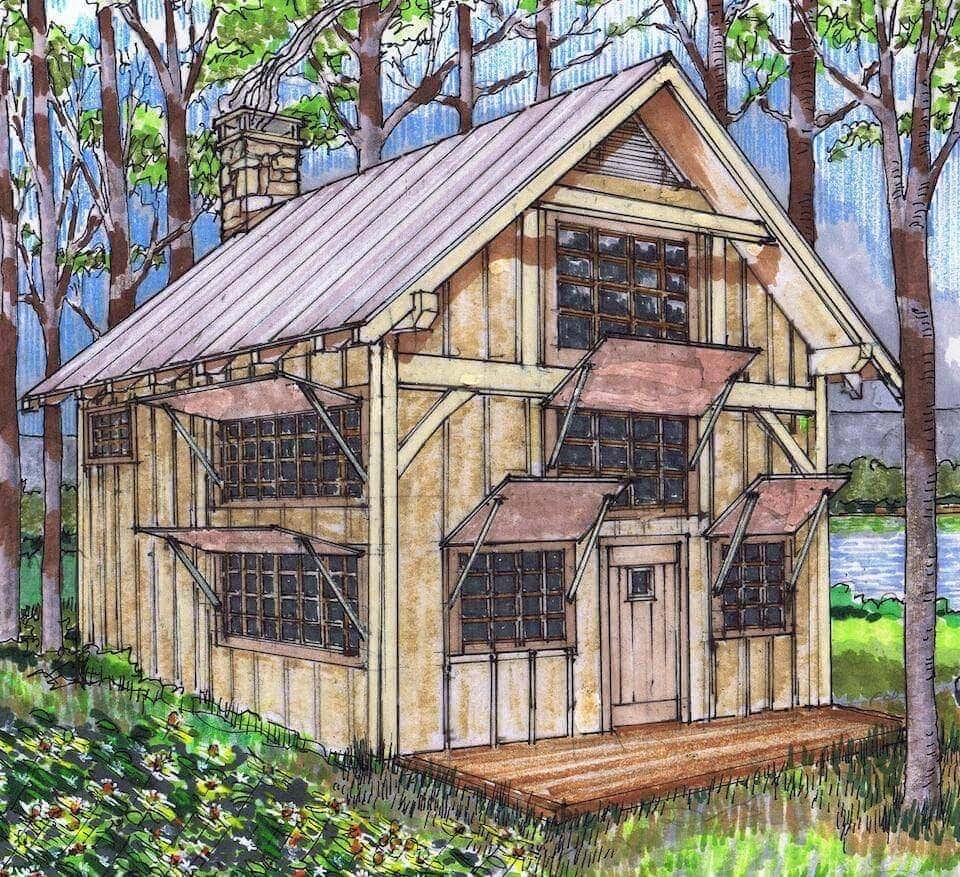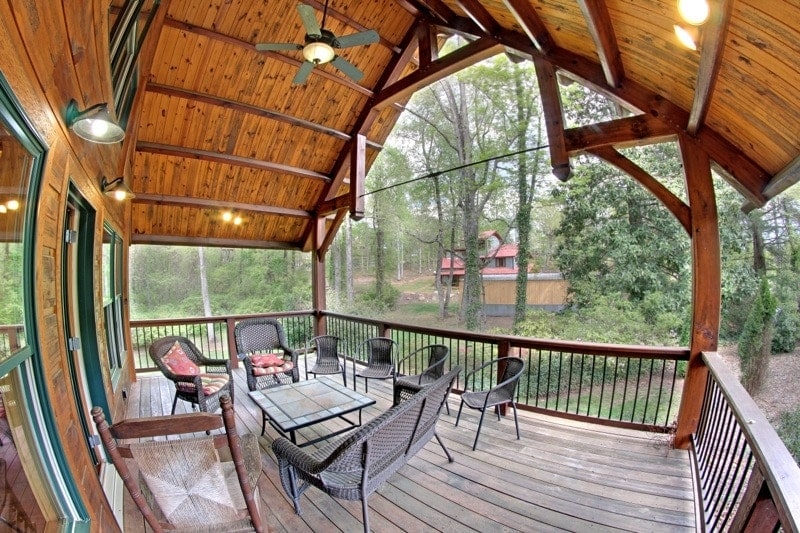There are various things that you will want to consider before designing your small timber frame home. There are several reasons why many people are starting to build these unique homes. With small timber frame floor plans, you will be able to actually save a huge amount of money when you are building your new home.
Trying to design floor plans for a home can be a very exciting time in a person’s life. You may have seen different rooms in other people’s homes that you may have liked. When you start to design your timber frame floor plan, you may be able to take these different ideas and combine them into your own home. You can look at regular house plans and just simply change a few things to fit your style. You may even decide that you want to add cathedral ceilings in the larger rooms in your new home, since they are a natural with a timber frame.
A benefit of building a small timber frame home is that you can change the layout of the floor plan very easily. With traditional home plans, it is not easy to change room layouts because there are walls that need to be in certain areas in order to add support to the home. With a small timber frame home, you will not have to have all of those walls for support. You can easily change the size of the room or change the design of the room to have things located in different areas.
The way you design any type of home can cause your electric bills to either be high or low. Think about the orientation of the sun, and make sure your design includes plenty of insulation to help to lower the cost of your electric bills. You also will want to try to decide where the duct work for the heating and cooling system will work best.

Before starting to design your new small timber frame home, you will want to concentrate on the amount of square footage that you want it to be. There may be some rooms that you will decide that you do not need in your new home. This will allow you to build a much smaller timber frame home and save even more money.
And Now To Furnish Your Small Timber Frame Home!
1- Pocket Doors – Expand Your Decorating Possibilities
Doorways not only break up a wall and room in sometimes-uncomfortable segments, but the swing of the door puts a big hamper on positioning things in its path.
You can solve at least part of the problem by installing pocket doors. Furniture can be moved closer to the opening and walls that would otherwise be hidden by the door are open for wall hangings or mounted storage. Just be careful in your planning: you may not have electrical and plumbing within the door pocket.
Sliding doors are making a big comeback with the introduction of sliding barn doors for interior doorways. Styled as a rustic, heavy door or slimmed down with translucent panels and fine wood for a sleek, modern look, sliding doors are a perfect way to get the features of pocket doors without tearing open a wall to construct it. They don’t provide as much acoustical privacy as a true pocket door, so be aware of that in your planning.
2- Use The Entire Wall – From Floor To Ceiling
For some reason, we don’t think of using space that’s much higher than eye level. There’s no reason not to utilize every bit of space on a wall for storage or display.
Bookcases and cabinets can run from the baseboard to the ceiling, and a rolling library ladder mounted to a storage wall is a real eye-catcher. You can also place paintings and other wall hangings high or low, as long as you plan a pleasing layout for your grouping.
Wall mounted sconces and lamps, display shelves and wall mounted furniture pieces free up precious floor space and give a more open appearance to a room. Try a wall-mounted credenza for the dining room or foyer, a wall-mounted writing desk or wall-mounted nightstands in a bedroom.
3- Windows – Light And Airy For Visual Appeal
Lots of natural light and views gives any room an open, expansive feel. However, each square foot of wall space you devote to windows is a square foot you can’t use for storage or display.
Consider tall windows or floor to ceiling windows for spaces that won’t be needed for other uses. If the window will be smaller, perhaps a window seat beneath it would be appropriate. This feature adds additional seating and storage space. In general, place window sills closer to the floor in public areas, and higher off the floor in more private spaces (such as bathrooms).
Choose light fabrics and colors to minimize the impact of the window treatments. Heavy, multi-layered drapery shrinks the visual space. Inset window coverings like roman shades and mini-blinds keep the room’s look sleek and expansive.
4- Furniture – Choose The Right Scale For Your Room
When you go to your local furniture showroom, take a look around. It’s probably a huge space that has very high ceilings and loads of furniture sets placed around the area. Today’s furniture tends to be oversized and massive in scale. You need to keep that in mind when you start furniture shopping.

Before trudging off to the store, measure the size of your room and take your measuring tape with you. Let’s say you’ve fallen in love with a mammoth four-poster bed with triple dresser, highboy and matching nightstands. How will they fit in your bedroom? Spend some time with graph paper and cutouts of possible furniture pieces to see if your room can handle them.
Multipurpose furniture pieces give you a big bang for your buck. A coffee table that opens for storage gives you a place to hide toys and games in your family room. A bench with storage beneath or inside is perfect for shoes and gear in a mudroom or blanket and pillow storage in a bedroom.
Finding the right size pieces of furniture and accessories will keep your room looking cozy, not cramped. If you’re into vintage or classic furniture, you may find perfectly sized pieces at auctions, resale shops, thrift stores and garage sales. Older furniture styles leaned towards smaller scale furnishings that may fit your rooms to a T.
Decorating a large home has its advantages. You have plenty of room to spread things out, rearrange freely, use larger furnishings and display more of everything. But your smaller space can be every bit as stylish and well turned-out as its big sister – it just takes a little more thought and ingenuity to bring out the charm and intrinsic beauty of your home.

